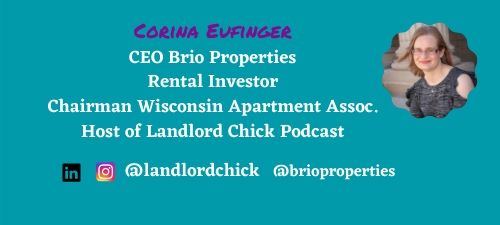WITH THIS AGREEMENT, I DO PARTNER WITH THEE
We’ve all seen the writing on the wall: Partnerships are a great way to scale your portfolio quickly. It makes sense. At its most basic description, a partnership helps you bring to the table what you lack. Where you are deficient you can bring someone in who offsets that deficit. It doesn’t matter if the deficiency is intangible (a personality trait) or tangible (credit score, money) a partnership can help in both areas. Yet how do you create a partnership that will solve these issues AND not blow up in your face?
Partnerships are a marriage.
Entering into a partnership on a real estate deal is like entering into a marriage contract, especially in the cases of buy and hold rentals. In these instances, you are likely forming an LLC with the person so you are entering into a formal long-term arrangement recognized by a government entity. So take it seriously. Just like you (hopefully) wouldn’t tie the knot with someone after meeting them over a weekend, don’t do the same thing with partnerships.
Partnerships are always best done with people you know on a fairly deep level. Not necessarily their hopes, dreams, and fears in general but it requires knowing them beyond a casual acquaintance at a networking event. You want to know how they operate their lives, the working style, the demands on the time they have. Will this mesh with what your vision is for a partnership in real estate? If someone has a demanding job (60 hours a week) and they travel a lot for that job, does that affect your feelings about entering into a partnership? If they like to work hard during the week including evenings but rip the town open on Friday and Saturday, are you able to work with that person? I’m not saying any of these particular situations are ones you should avoid. It’s important to understand if these situations fit into your ideal partner or partnership.
Deciding Roles.
It makes any partnership more efficient and less complicated if there is a clear division of roles and responsibilities. It avoids duplication, overlap, and in some instances having too many cooks in a kitchen. There will be some aspects you work jointly on or have equal say in but some areas for the sake of efficiency should belong to one person. You should always have an equal say in which deals are purchased. It’s not equally important that you have the same amount of control over flooring decisions. Having minor items that you are both responsible for ensures that you can work through decisions twice as fast and it gives you the opportunity to “delegate” tasks that don’t feed to your talents.
Here are some ideas of items that can be divided amongst the partners: bookkeeping, deal finding, design aesthetics, contractor coordination, day-to-day tenant operations, etc. There are also a few key items you want to have equal say in property purchases, funding decisions, and changes in purchase criteria. These are areas I believe partners should always come to agreements on, including each compromising at various points. Not one partner should control the agenda with these items.
Making It Formal
Whether you do an operating agreement or partnership agreement will likely matter on what type of entity (if any) that you use. An operating agreement is usually reserved for LLCs. A partnership could be used in the event you own the real estate in your personal names (which I don’t recommend at all). It’s very rare to enter into a real estate deal with someone and use a limited liability partnership. The most common method is creating an LLC with that partner.
Obviously, this can become cumbersome if you plan on doing additional investing by yourself or with other partners. You would need another LLC for each of those instances. Having an additional LLC means having more bank accounts, tax ID numbers, and more papers to file with your tax return.
The Operating Agreement as the Prenup
Once you’ve decided on who does what and what you have equal say in, it’s time to get that in writing. I like to look at this ad the prenuptial agreement in a partnership. It’s where you outline who is responsible for what, what happens if one person wants to leave, and who brought what to the table. (It also should cover in the event of a partner’s death for good measure.)
In the Operating Agreement, you want to include who brought what to the deal. This is mostly used for the purpose of recording in the partnership unequal contributions to down-payment, rehab costs, etc. Mostly the tangible items of a specific monetary value. You may also include if one partner was mostly responsible for securing the financing, especially in the case of traditional funding. (Now you might be thinking, “what if we do multiple transactions and that changes.” Hang on Jose, we’ll get there.)
You will also include a general description of who does what. You don’t need to go into detail but it should be all-encompassing. Let’s take two partners Henry and Catherine. Henry is responsible for finding the deals, tenant management, and arranging contractors. Catherine is in charge of business bookkeeping (not tenant rent collection), setting up financing for deals, and because Henry hates doing showings Catherine takes care of leasing. The italic items above are what be entered into the roles and responsibilities section of an operating agreement. This section should include what the partners have equal say in. As mentioned above you want protection from a partner making unilateral decisions on matters with high consequences for the partnership. Here is where you include that both partners have to consent to a property purchase and the funding terms/method. Tip: if you have one partner who is on the mortgage but another is not, it should be included here that refinancing cannot take place for any reason without both partners’ consent.
It’s also important for documentation purposes that partners are allowed to participate in real estate outside of the LLC but they must never put LLC property up as collateral or use equity for individual purposes. (Any equity in the properties is best left to be used for activities in the LLC. It can become really tricky if you allow otherwise. Especially because the property would be considered collateral on any equity loan.)
Be clear on expectations and goals.
When entering into a partnership it’s important to be clear on what you expect out of your partner and your real estate journey. Potential target markets should be agreed on or certain ones disqualified if a partner feels strongly. What strategy may be employed is an important discussion. BRRR or turnkey, or both? Are you both looking at the same ultimate goal in real estate? Henry and Catherine may both want 46 units by maybe Henry wants all small multi-family while Catherine wants to get into medium-sized multi-family.
If you find yourself disagreeing on the ultimate goal, a few markets, or even whether to do other investing it doesn’t mean the partnership isn’t viable. You and your partner must go into it understanding that one or both of you may do some investing on the side or that this is a limited-time event (meaning limited years, not months).













